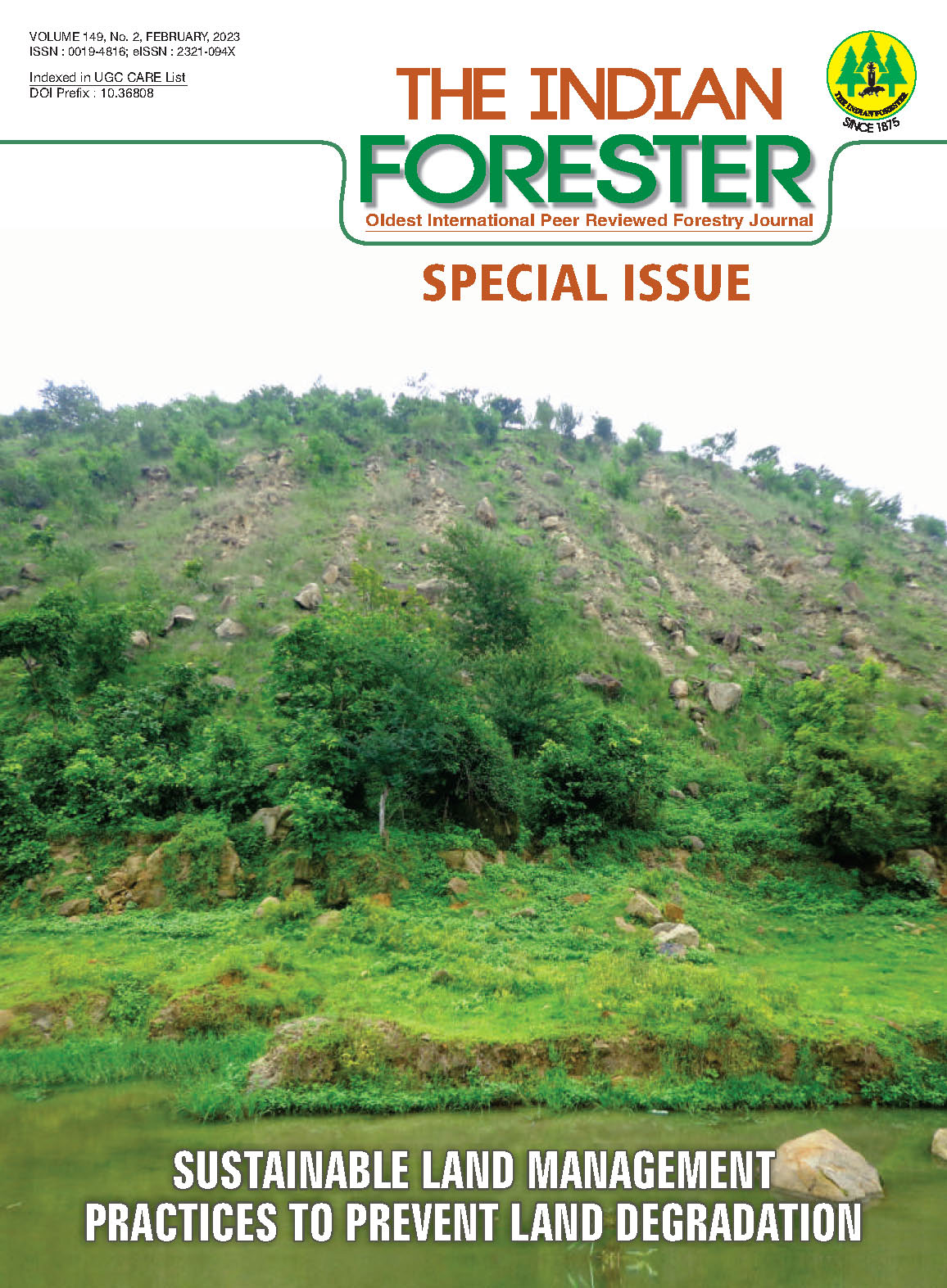GIS-Based Land Use/Land Cover Accuracy Assessment to Identify Dominant Species Areas in Protected Savanna
DOI:
https://doi.org/10.36808/if/2023/v149i2/153360Keywords:
Savanna, GIS, Accuracy Assessment, Kappa Statistics, Threatened Species.Abstract
Remote Sensing (RS) and Geographical Information System (GIS) are important tool used in image classification for sound forest management at local level. The factors which considered in classification, are spatial, radiometric and temporal resolution of satellite imagery, ground data, a precise classification process and expertise of the processes. The objective of this research was to classify land-use/land-cover (LULC) of the Rajiv Gandhi Orang National Park (RGONP) using RS and GIS techniques. Authors performed LULC classification through Iterative Self-Organizing Data Analysis (ISODATA) technique following accuracy assessment and Kappa statistics (K). The major LULC classified were Savanna (41%) and Woodland (30%). The dominant grass species found in RGONP are Saccharum sp., Imperata cylindrica, Arundo donax and Alpinia nigra. The study had an overall classification accuracy of 92.52% and kappa coefficient (K) of 0.89. The kappa coefficient is rated as almost accurate. Hence the classified image is found to be fit for further research. This study presents crucial information about protected area and can be useful for decision making in forest and wildlife management.Downloads
Download data is not yet available.
Downloads
Additional Files
Published
2023-05-04
How to Cite
Singh, S., Mane, A. M., & Gogoi, R. K. (2023). GIS-Based Land Use/Land Cover Accuracy Assessment to Identify Dominant Species Areas in Protected Savanna. Indian Forester, 149(2), 215–222. https://doi.org/10.36808/if/2023/v149i2/153360
Issue
Section
Articles
License
Unless otherwise stated, copyright or similar rights in all materials presented on the site, including graphical images, are owned by Indian Forester.





